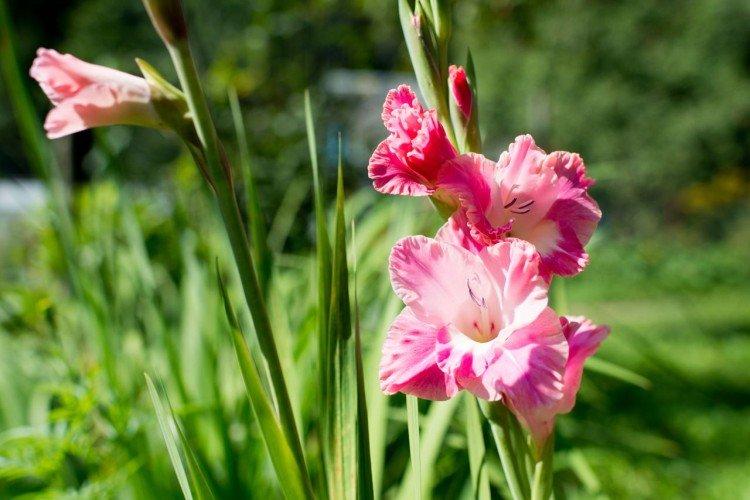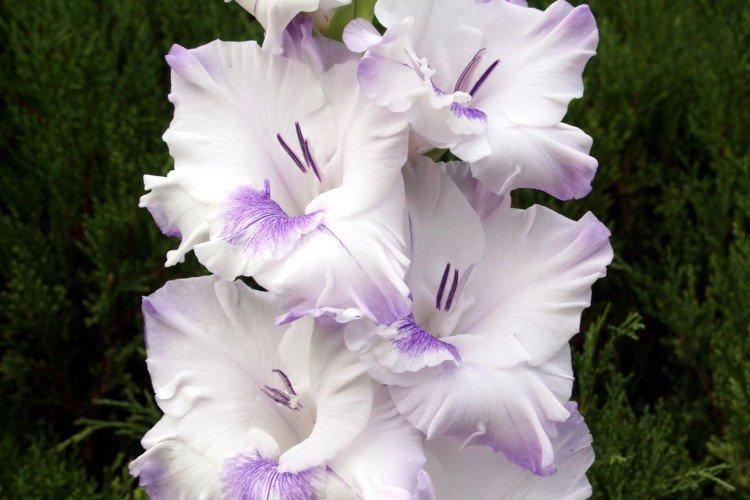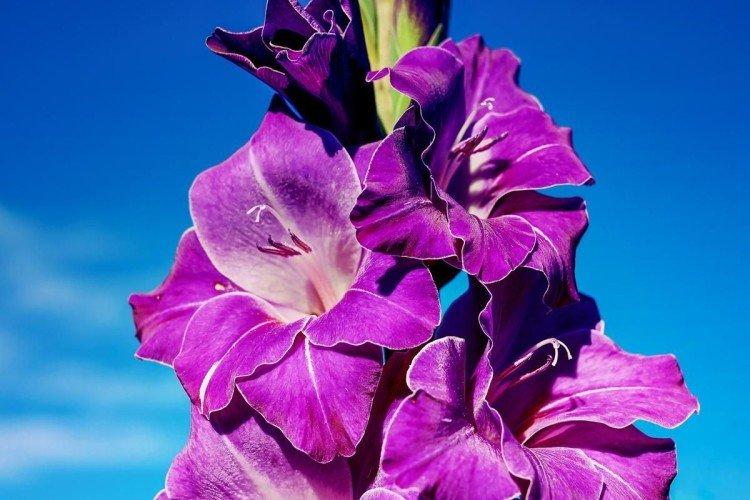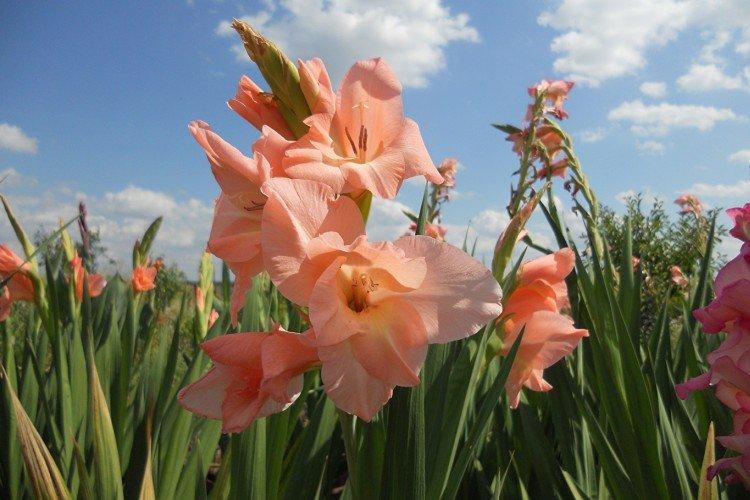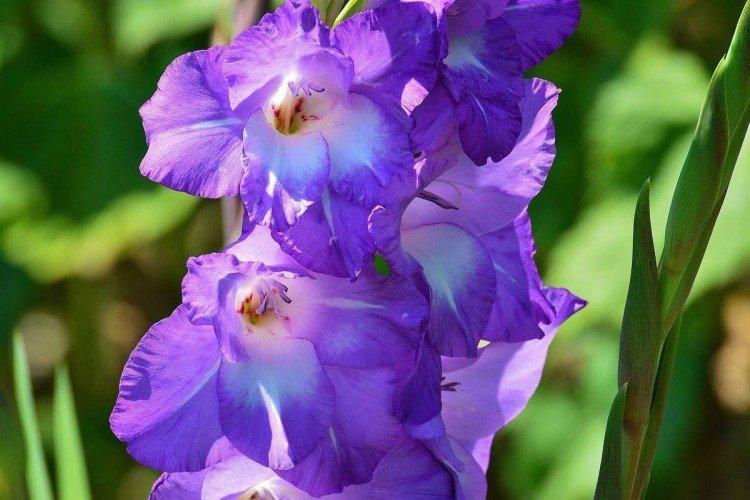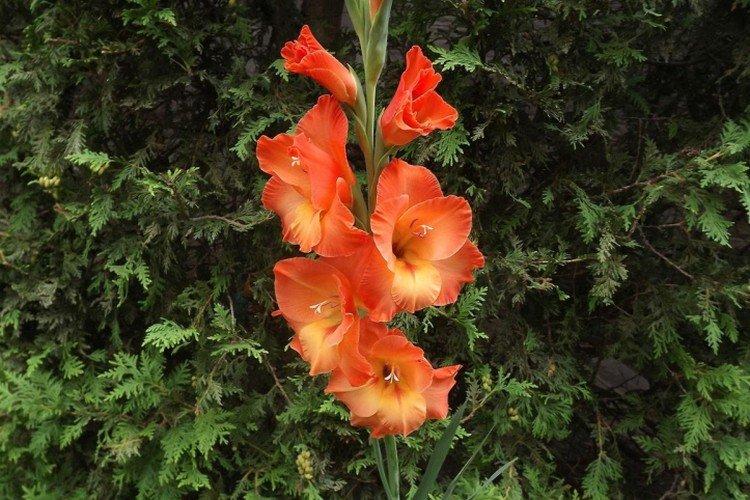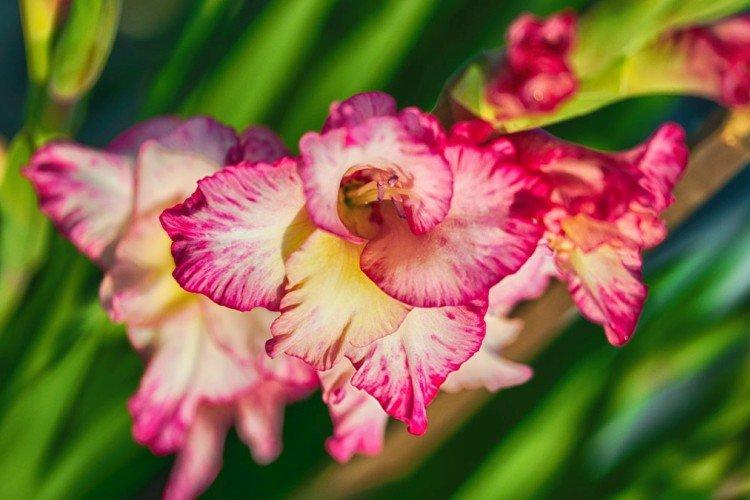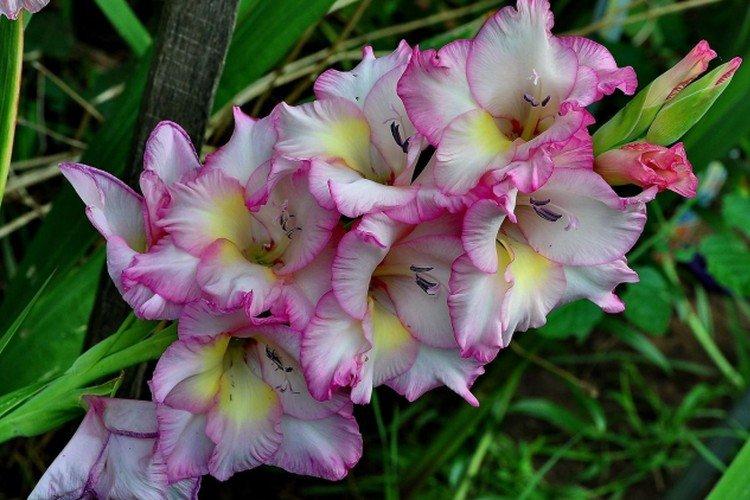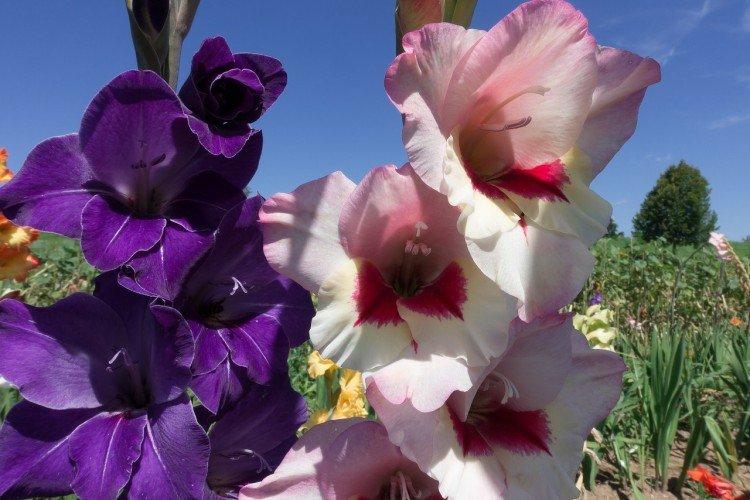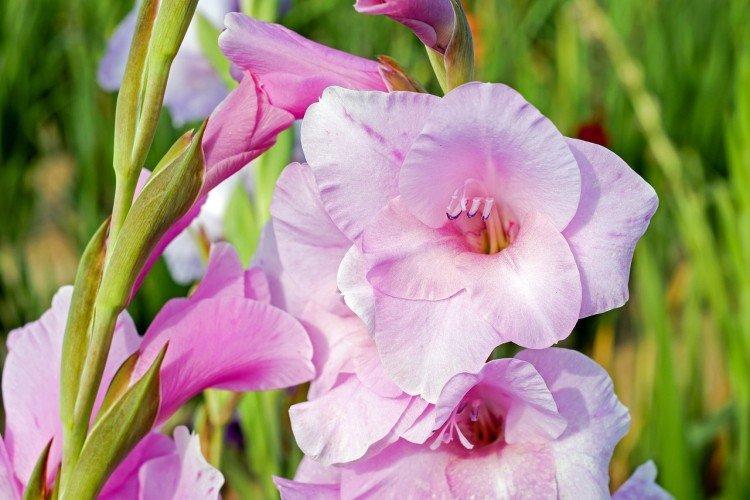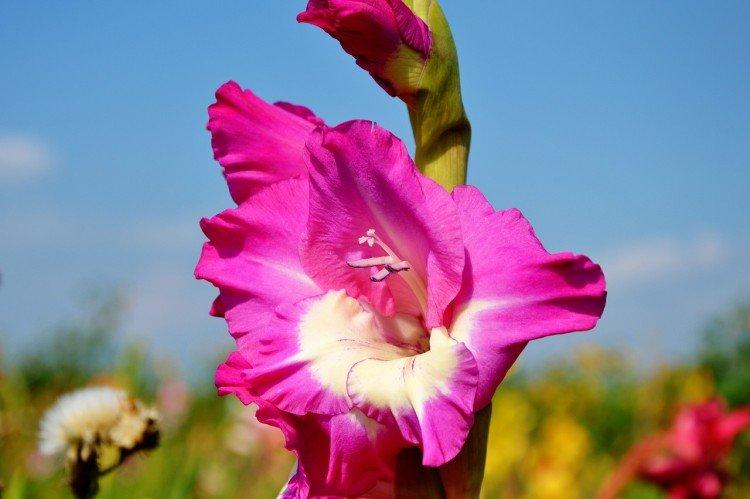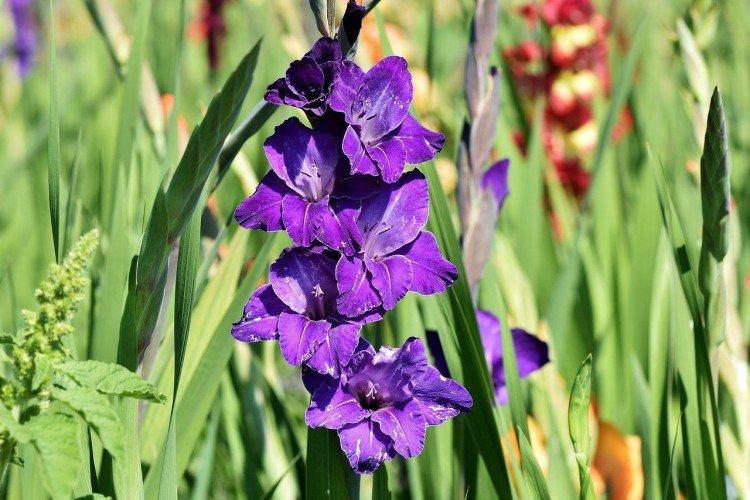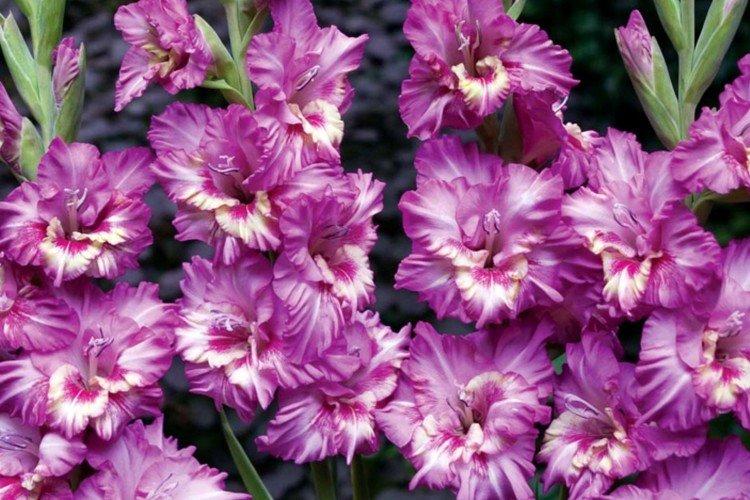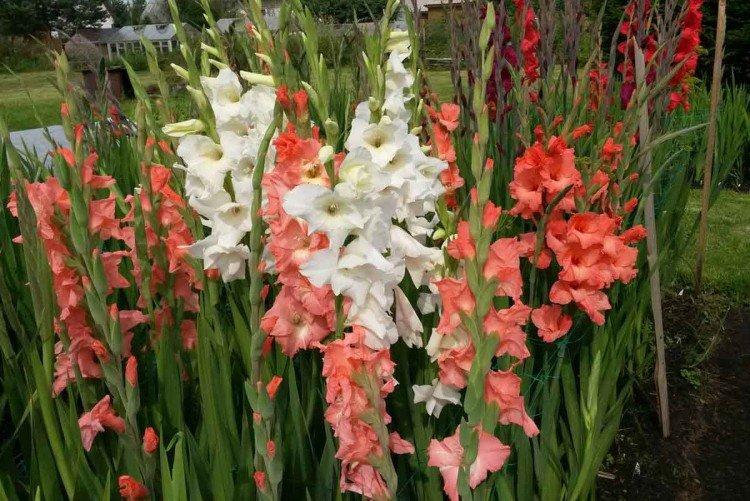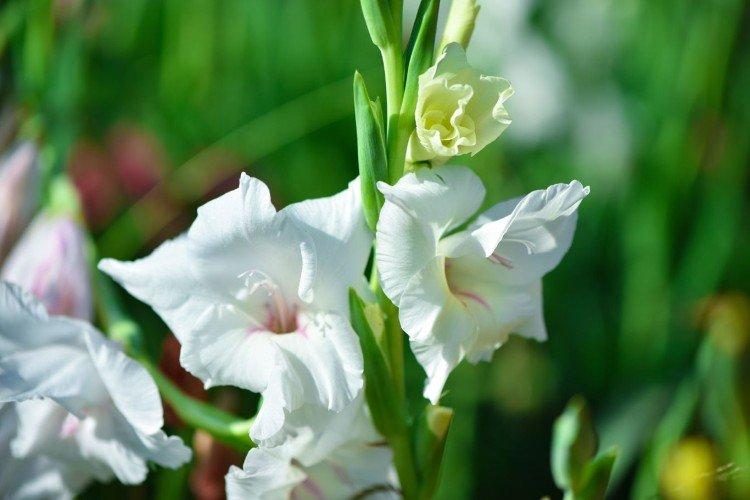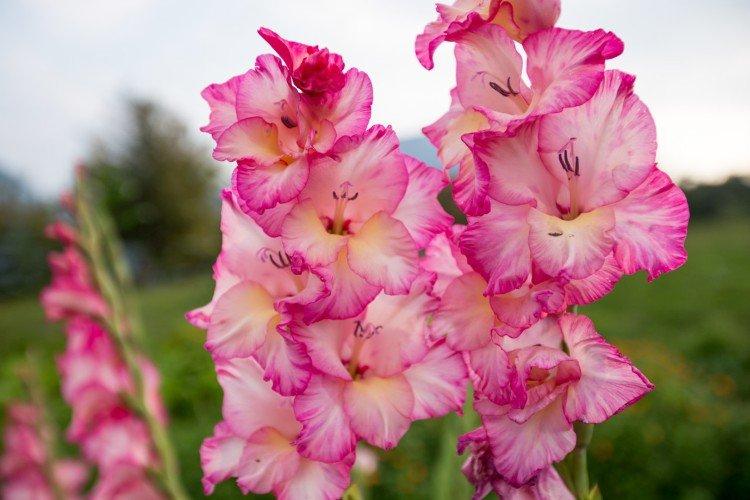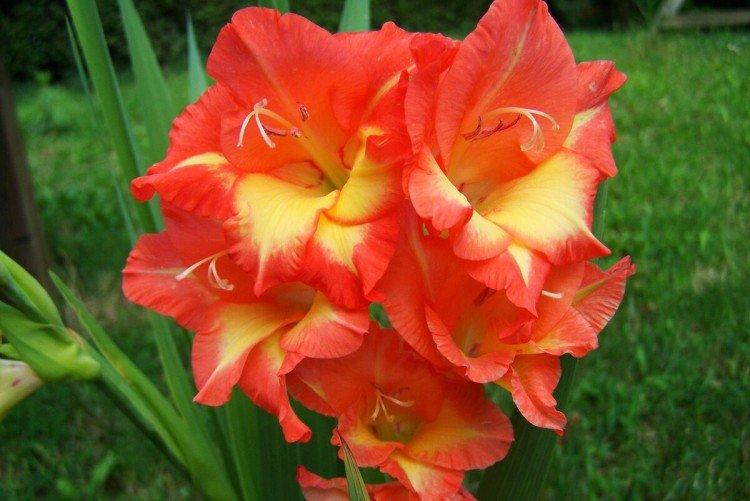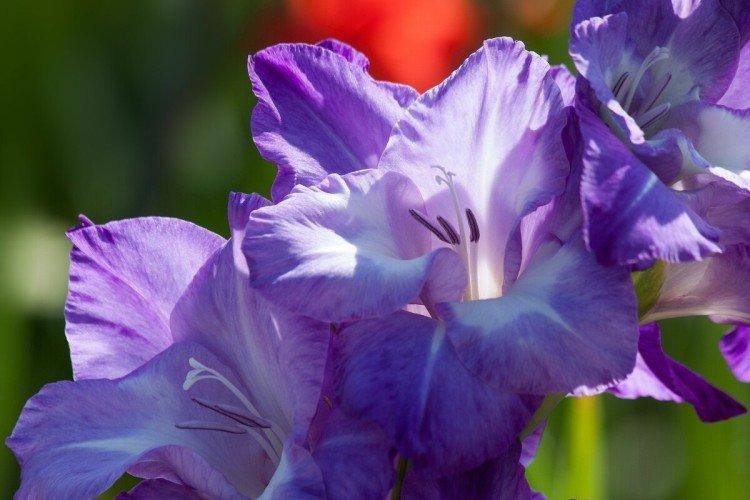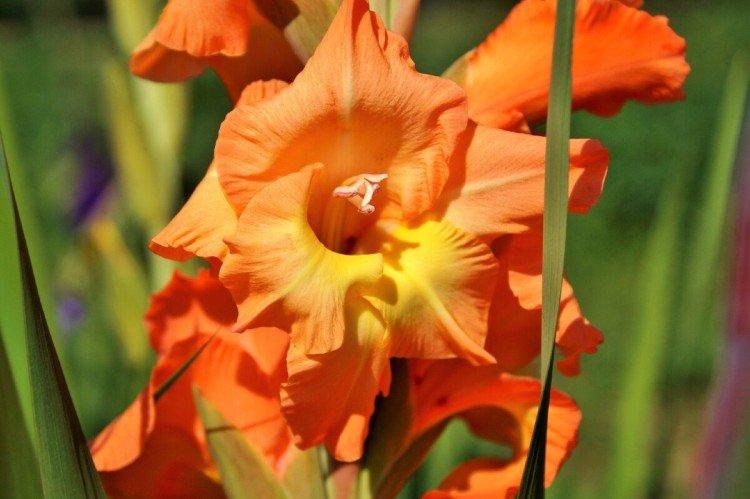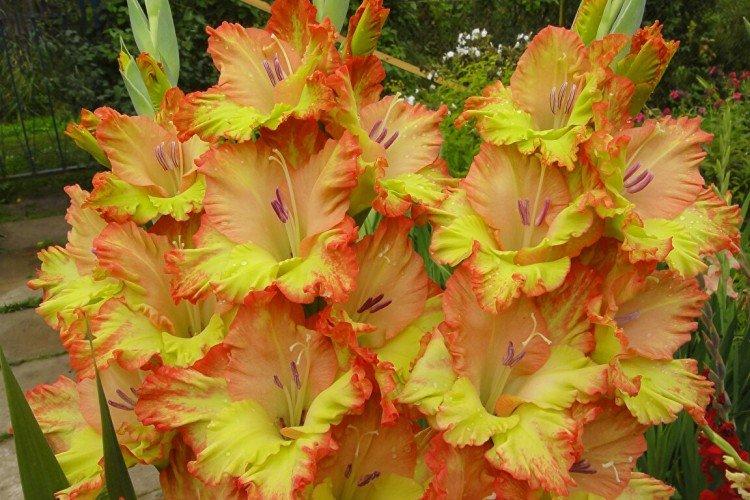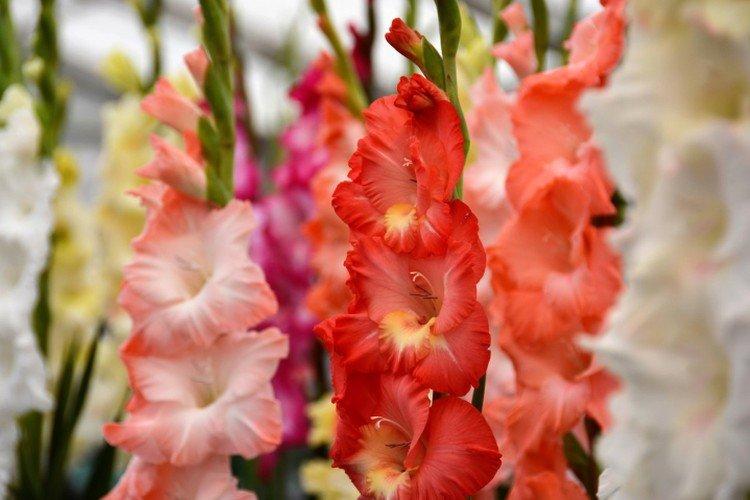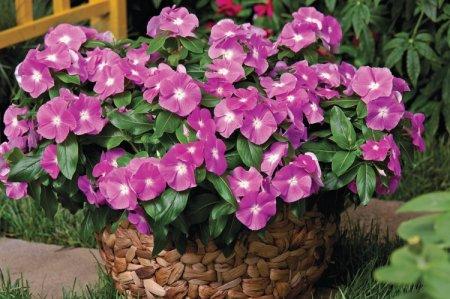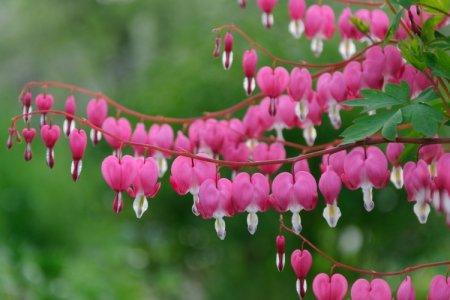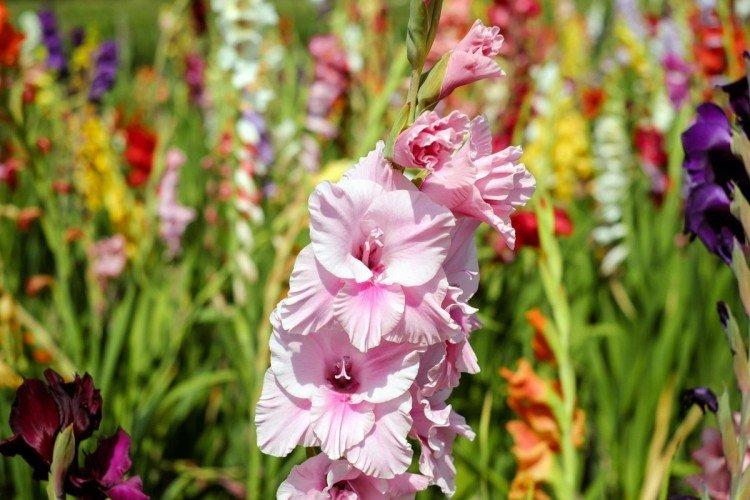
Lush, tall and multi-colored inflorescences of gladioli cannot be confused with other flowers. They are unique in their own way, and for their characteristic shape they are popularly nicknamed the skewers. Surprisingly, gladioli were grown in ancient Rome, and in ancient Greece they were a local weed at all!
general information
Gladiolus is a moody perennial that requires a lot of attention at all times. The strong, straight stem reaches 1.5 m in height and is surrounded by tough thin leaves about half the height. Everything else is occupied by a powerful inflorescence, on which large buds are densely collected.
The root system of gladioli is a corm, on which thin small roots grow. These bulbs are covered with dense scales, from under which sprouts hatch. In fact, each bulb is renewed annually.
The flowering time depends entirely on the specific species and variety. Some bloom at the very beginning of summer, while others are already closer to autumn. Funnel-shaped flowers are collected in inflorescences-arrows and gradually open from bottom to top.
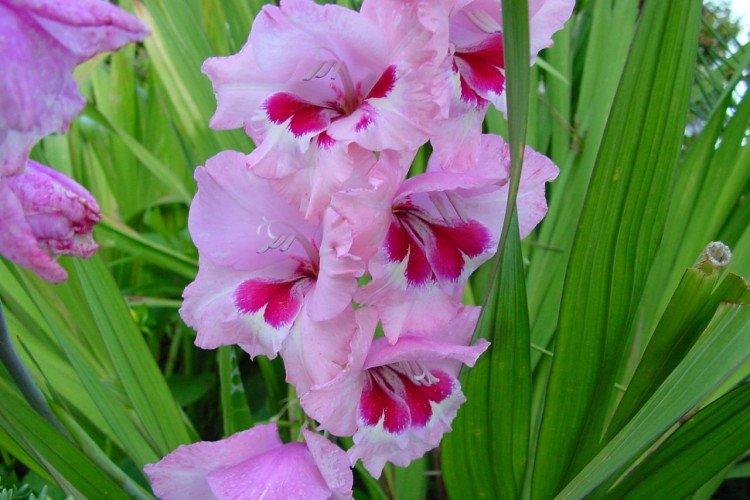
Types of gladioli
The number of decorative varieties of gladioli has long exceeded a hundred. But first, let's figure out the main types and their differences!
Common gladiolus
One of the most common species, which has become the basis for many modern breeding wonders. It is tall, up to 1 m, with long thin leaves and voluminous inflorescences up to 20 cm in length.
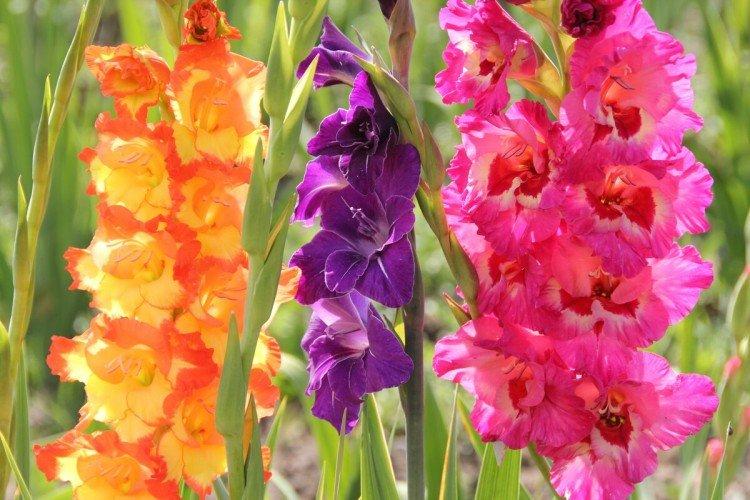
Swamp gladiolus
It grows in swampy regions and is compact in size. It has a thin stem up to 60 cm and about 5-8 purple flowers per peduncle.

Tiled gladiolus
In nature, it is a very small species up to 50 cm, but in culture it is easily grown almost twice as much. The inflorescence is one-sided, but the number of buds reaches 14 pieces.

Byzantine gladiolus
In nature, it prefers forests and lawns, and blooms during the summer. With the small size of the peduncle, the flowers themselves are quite large - up to 6 cm.
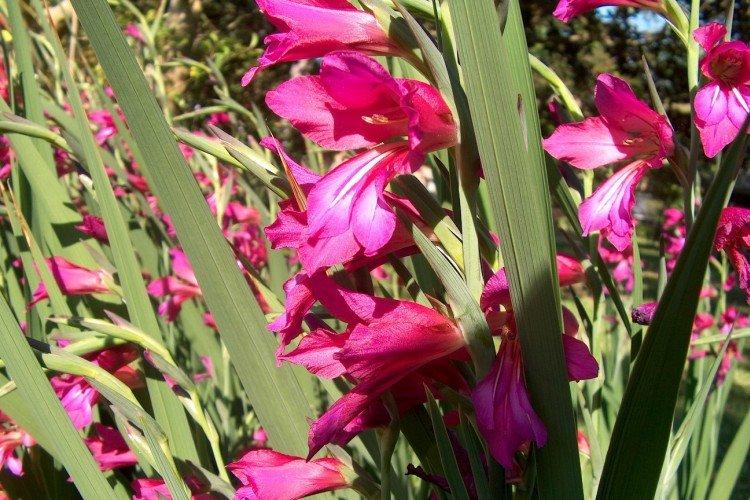
Gladiolus Kochi
A charming mountain variety with the same charming purple buds on a thin but sturdy shoot. It has narrow, linear leaves and a small, leathery bulb.

Gladioli care
Gladioli can hardly be called unpretentious. They have specific requirements for everything from storing the bulbs to cutting the flower stalks. But we tried to highlight the main points!
Temperature
Gladioli tolerate the temperature and climatic features of our latitudes well. But here it is important to choose the right variety, adapted to a particular region. Because bulbs from warm countries do not tolerate planting in the cold north.

Lighting
Gladioli need light, because in the shade, you can't wait to bloom at all. This is especially true for late varieties, some early ones can still be grown in partial shade, but they will bloom later.
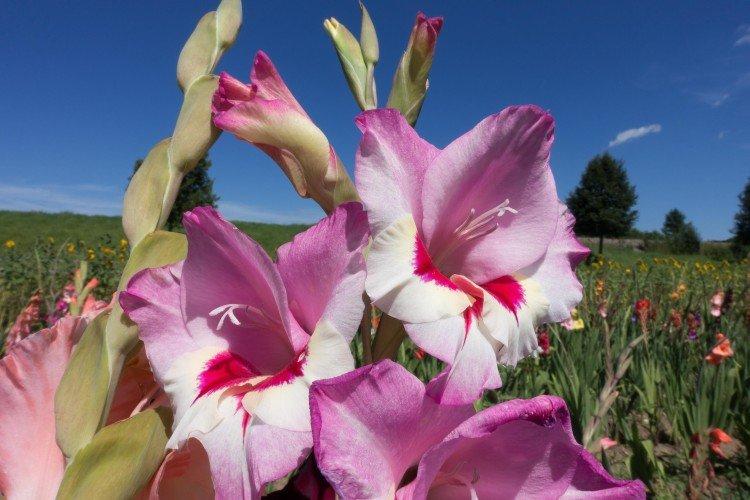
Watering
It is recommended to water gladioli not too often, but abundantly. At normal times, once a week is enough, but if the drought is prolonged, then increase the frequency according to the situation. After that, always loosened the soil and remove the weeds.
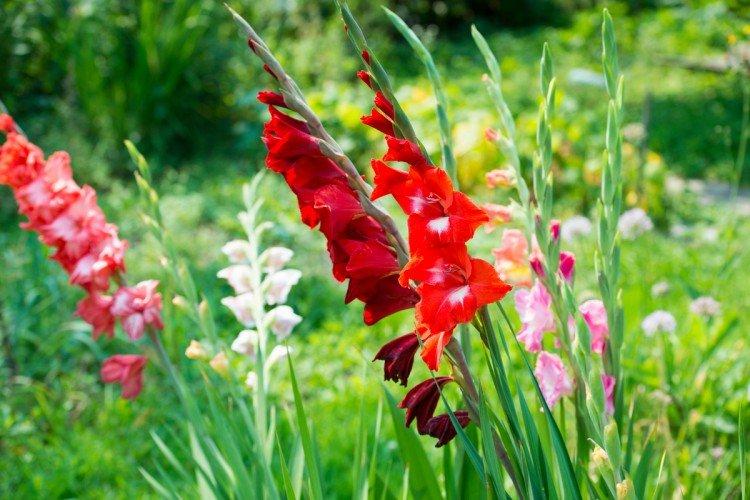
The soil
Gladioli need a slightly acidic, light and fertile soil. But they have a specific feature. You cannot grow bulbs in one place for more than 2 years, and when replanting, it is better to choose a site with a different type of soil.
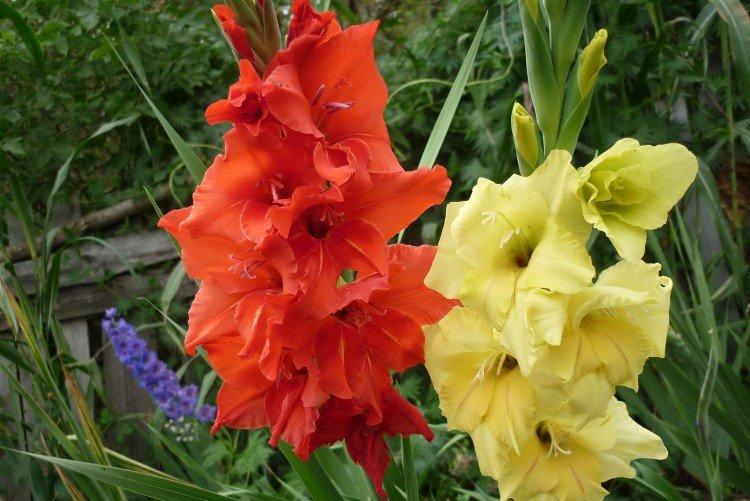
Fertilizers and feeding
Gladioli need to be fed separately for growing foliage and for flowering. The first feeding is at the very beginning of the growing season, then - during the formation of buds.
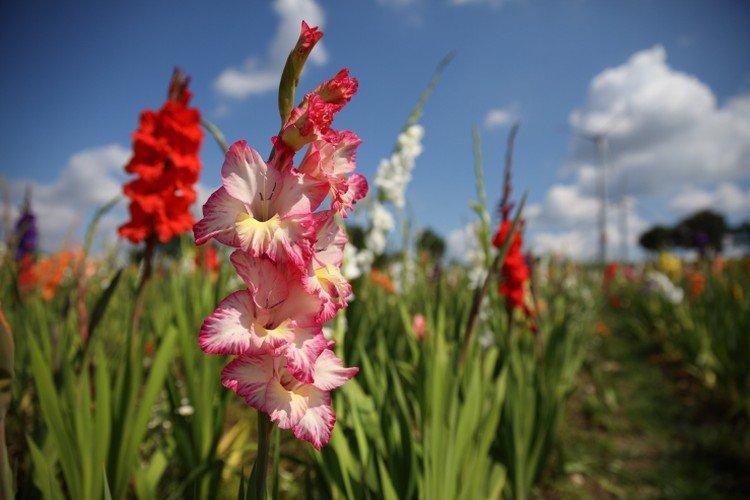
Pruning
Powerful flower stalks of gladioli take a lot of energy from the bulb. Therefore, many gardeners argue that it is better to admire such flowers in a cut than in a flower bed.In any case, the sooner you remove the peduncles, the more useful it is for the plant.
Cut the peduncles so that each leaves at least 4 leaves, but at the same time the "stump" is completely hidden in them. Immediately after the procedure, reduce watering to a minimum and feed the plant so that the bulb accumulates useful substances. Especially if you still remove the peduncles after flowering.
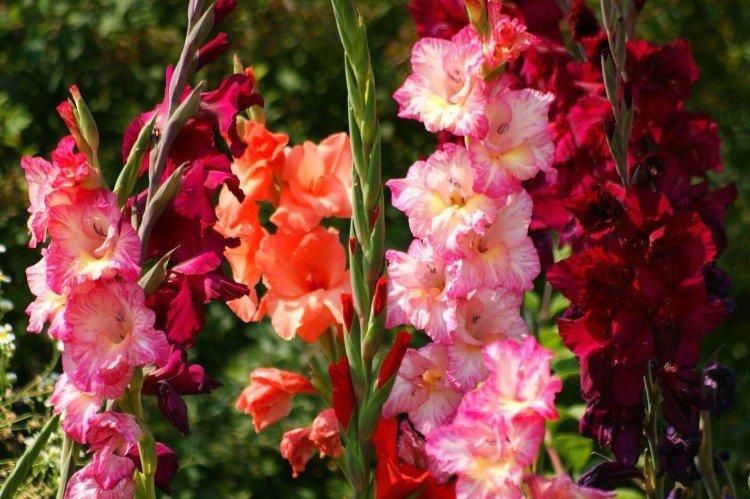
Storing the bulbs
In the second half of September, carefully remove the bulbs with a pitchfork together with the roots, rinse and inspect. Throw out all the smallest, too old, painful or damaged bulbs. Cut the roots, disinfect, dry well on paper and put them in a mesh box. Store them there for 2-3 weeks at +25 degrees and above.
Reduce the temperature to +20 degrees for another 4-6 weeks, and all this time, stir the bulbs periodically. Then you can send them for permanent storage at a temperature of about +6 degrees. For the smallest and youngest, reduce it to +3 and increase the humidity to 90%.
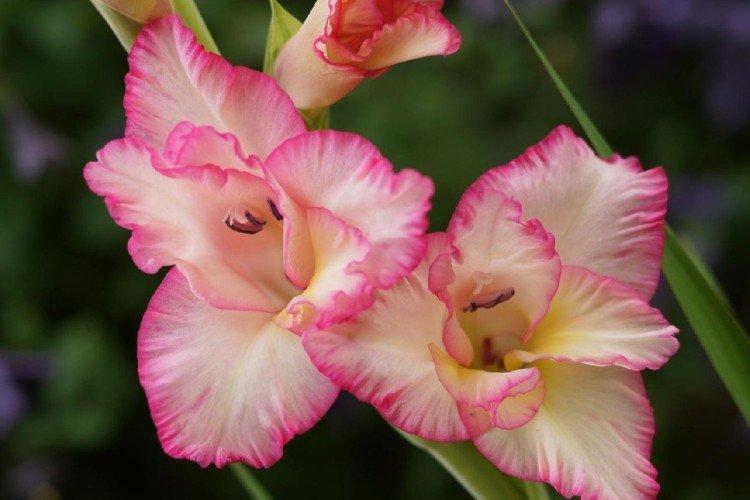
Planting and breeding
A month before planting the bulbs, sort them out again and remove the toughest scales. Put in heat and light in one layer, sprouts up. Treat with special antiseptics before disembarking. Planting depth depends on the type of soil: for heavy soil, this is approximately 3 bulb diameters, and for light soil - 4.
Children are prepared in the same way - first remove the hard shell, and then into the warmth. But the light should be diffused, because they are softer. Plant gladioli in rows 7 to 15 cm apart, depending on size. Add a layer of sphangnum to the bottom to regulate acidity and drainage.
We advise you to plant the bulbs by size, gradually moving from large to small. Otherwise, the big ones will not allow the small ones to develop and will pull all the resources onto themselves.
In nature, gladioli often reproduce by seed, but in everyday life it is long, inconvenient, and the flowers do not retain their varietal characteristics. This method is only suitable for the southern regions.
For propagation with a bulb, you just need to select high-quality and healthy material. They are simply cut vertically in half so that a fragment of the bottom and kidney remains on each part. The larger the proportion of the bulb, the faster the plant will develop. You need to cut it a couple of days before planting so that the cut dries.
In addition, tubers are used for reproduction, but their number and appearance strongly depends on the variety. These are small, seemingly underdeveloped shoots with rudiments of leaves, which just finish forming by the end of the season. Then they can be separated.
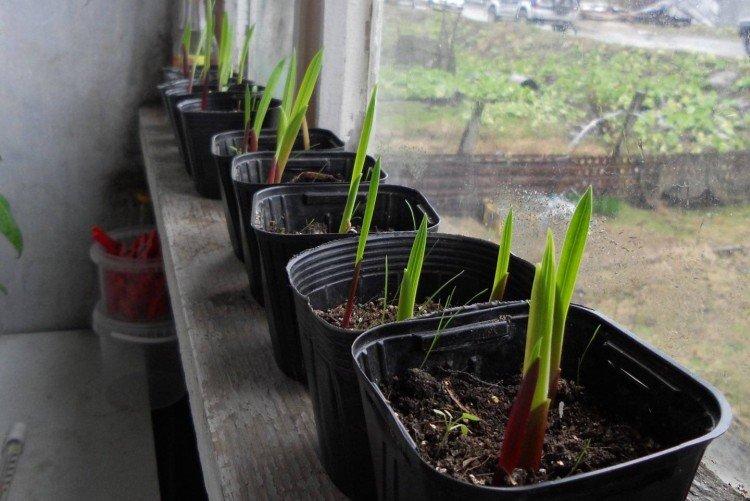
Pest and disease control
Gladioli suffer from a typical set of bulbous plants and have mediocre immunity. Therefore, the first step is to carefully select the planting material and treat the bulbs with special preparations. It makes sense to carry out preventive spraying with fungicides and insecticides.
The most dangerous disease is dry rot, which affects all parts of the plant from the bulb to the tips of the leaves. Brown spots appear everywhere and the plant withers. Sick gladioli must be completely removed, destroyed and treated with drugs.
Gray mold causes soft, watery spots and is most often caused by too high humidity. In the early stages, treating the bulb with fungicides and drying it can help. The same treatment is for scab, the symptoms of which are reddish-brown spots on the stem.
Bacterial cancer appears as bumpy growths on the bulb and cannot be cured, so the plant must be destroyed. The same goes for viral mosaic and jaundice, in which the leaves change color, and the plant becomes smaller and degrades.
Thrips and wireworms are dangerous pests. They are helped by regular spraying with insecticides at least three times per season and processing the bulbs before storage. Also, do not plant gladioli in an area where potatoes or carrots used to grow.
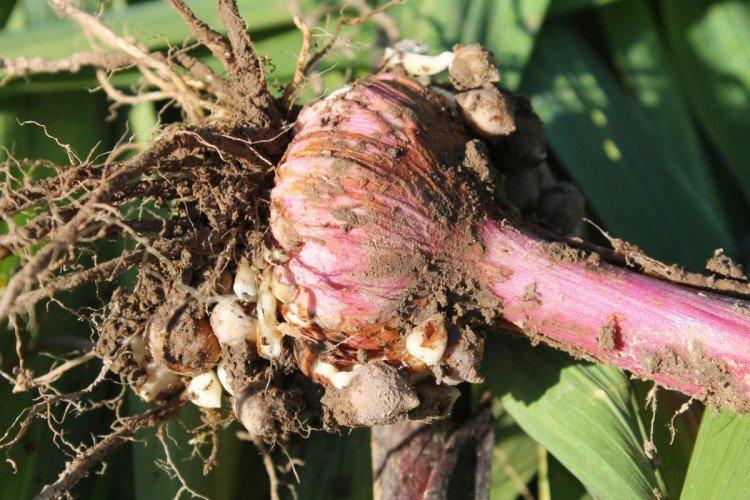
Gladioli - photo
Yes, gladioli are demanding, capricious and require many tricks. But isn't their beauty worth it?
